Cebu City, Philippines – Any trip to Cebu, no matter your itinerary, is wasted without adding a foodie element to it. Not only is Cebu home to what the late travel documentarian and chef Anthony Bourdain once called “the best pig ever,” but it’s a great spot for seafood and street food alike. Plus, it doesn’t even matter what kind of traveler you are because so many of Cebuanos’ favorite dishes are available in market stalls and pungko-pungko eateries (so named because you “squat” down to eat on low tables), as well as in sit-down restaurants for those who require cutlery and air conditioning—you get to choose what kind of foodie experience you’d like to have.
If you’re traveling to PH anytime soon, KUBO recommends including Cebu in your local travel itinerary. Whether or not you make it to this weekend’s Sinulog Festival, there’s always several reasons to explore the Queen City of the South (check out our Metro Cebu Guide). And one of them is always to experience Cebuano food. Check out our list of top must-eats when in Cebu—with options for a street food or market experience, as well as a restaurant experience, so there’s no excuse to miss out.
1. Cebu Lechon
A visit to Cebu wouldn’t be complete without trying the world-famous lechon. Known for being flavorful from bones to meat to fat to the ultra-crispy skin, Cebu lechon is all about umami goodness. Unlike in other parts of the country, where lechon is paired with sarsa or liver sauce, this pig needs no flavor enhancement. Although you may want to make a dipping sauce of patis (this is what Cebuanos call soy sauce, and not fish sauce like in other parts of the country), suka (vinegar), and sili (hot peppers).
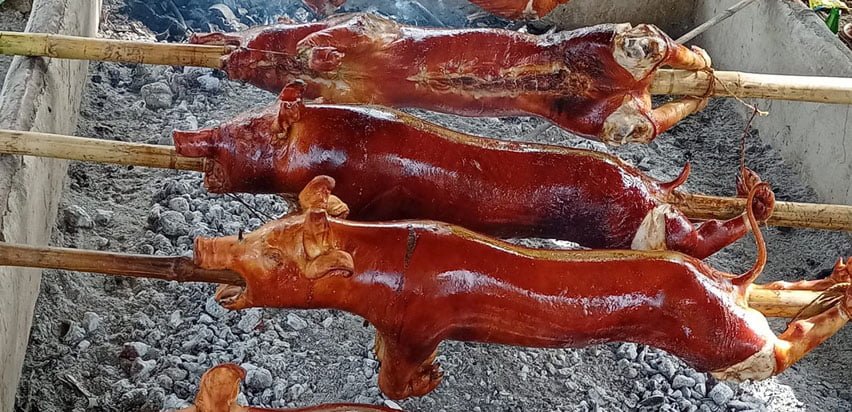
Where to get it: For the authentic street food experience, there are assorted stores in Talisay City’s población area that are famous for their roasted pig, among these Ruthy’s Lechon by Lola Mila Garces. If you don’t mind a bit of a drive, Carcar town is best known for its lechon, and you can pick from any of the lechon stands in their public market, where stalls will often let you have a taste before you buy. If you’re looking for a more restaurant-like experience, though, you can also try CnT Lechon, Rico’s Lechon, or House of Lechon—all of which have multiple branches around the metro.
2. Puto Maya and Sikwate and Other Tablea Treats
Puto and sikwate is a breakfast combination as beloved to Cebuanos as cereal and milk elsewhere. Puto maya, or puto for short, is a sticky rice cake made with glutinous rice, ginger, and coconut milk. It’s usually served wrapped in banana leaves. Meanwhile, sikwate is Cebu’s hot chocolate, made traditionally with tablea (ground cacao beans formed in a tablet), hot water, and brown sugar using a batirol (a wooden tool used to mix the chocolate). The combination makes for a delightful breakfast or even afternoon snack, especially paired with fresh mangoes.
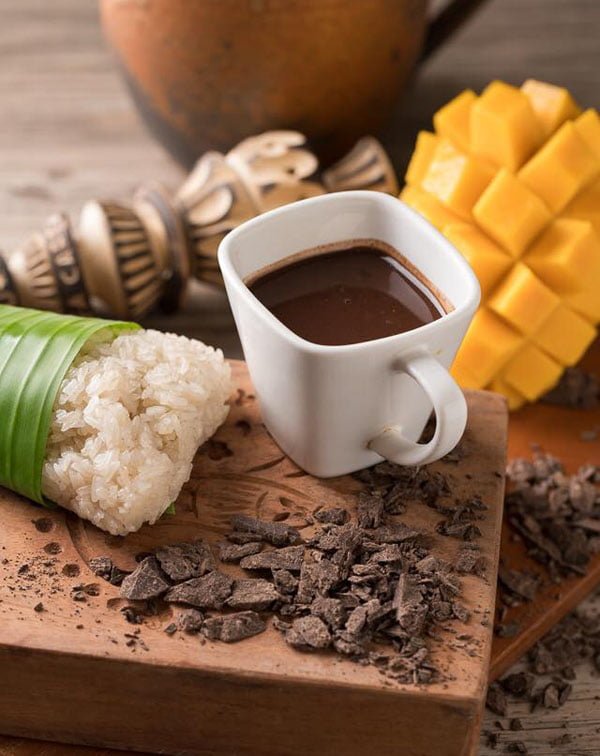
Where to get it: For the street food experience, head on over to Carbon Market (the biggest market in Cebu) and get your puto maya and sikwate from the many stalls that offer it. For a restaurant experience, try one of the branches of Tabléa Chocolate Café in Cebu.
3. SuTuKil
STK or SuTuKil is a portmanteau of the words sugba (to grill or barbecue), tuwa (stew or tinola for Tagalogs), and kilaw (raw seafood “cooked” in vinegar, ceviche-style). STK is usually a paluto (to have cooked) experience, meaning you would pick out fresh seafood and then choose the way you would like to have it cooked. Apart from the traditional SuTuKil options, most also offer options like deep frying, sweet and sour, chili garlic sauce, etc.
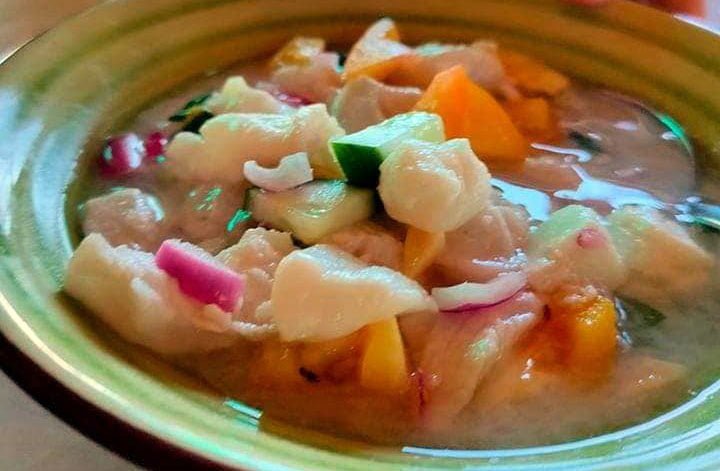
Where to get it: While SuTuKil is available from just about any seafood and grill eatery in Cebu, including Larsian (mentioned below), the most famous spot for it is beside the Mactan (Lapu-Lapu) Shrine. Places like Mayang (also known as Tianguo) Seafoods and Restobar have been serving SuTuKil paluto on the seaside for years. For the restaurant experience, you can try STK ta Bai sa Paolito’s Seafood House.
4. Larsian Barbecue
Cebuanos really love their barbecue, and Larsian sa Fuente is probably the best-known place for it. Dozens of stalls serving barbecue of all kinds as well as other dishes like kinilaw and various soups and stews make this one of the busiest food hubs in Metro Cebu. We recommend trying a little of everything to find out your favorite type of barbecue (though the chicken skin barbecue is one of our personal faves). Pair your meat or seafood with either puso (hanging rice) or mais (corn rice) for a more authentically Cebuano meal.
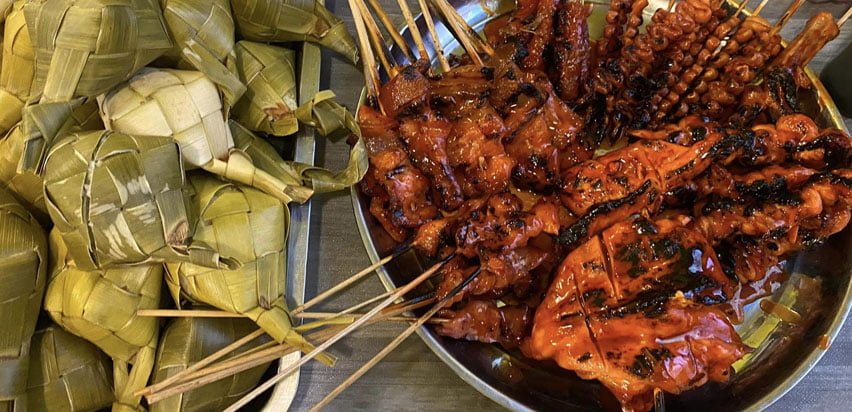
Where to get it: Head over to Sugbo Sentro along Fuente Osmeña Circle by jeep, taxi, or car. If using a map app, you may want to type in Larsian sa Fuente.
5. Bakasi (Eel) in Mactan
Reef eels may not be the first thing you think about when looking for Cebuano food, but since being featured on Netflix’s Street Food – Asia documentary back in 2019, this has gained increasing popularity among tourists. While traditionally prepared as a stew, the eels are also served deep fried, and we recommend trying it both ways.
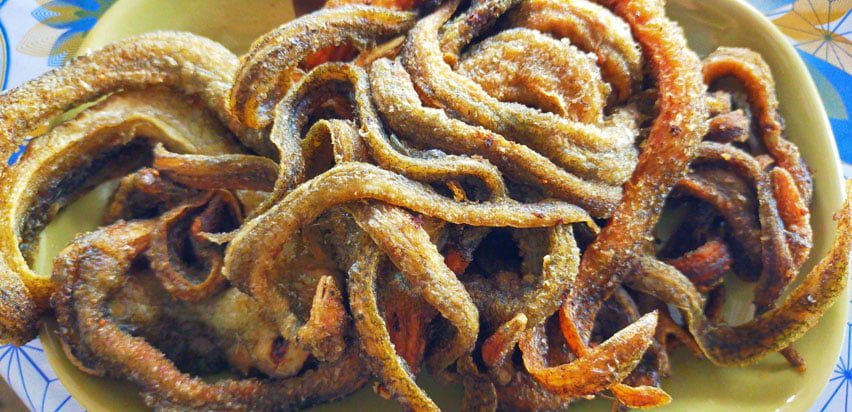
Where to get it: Although there are now many bakasihan eateries in Mactan, perhaps the most famous remains Entoy’s Bakasihan in Barangay Buagsong, Cordova. Although founder Mang Entoy Escabas passed away in 2020, his family continues to run the business.
6. Tuslob Buwa
The name tuslob buwa means “to dip in bubbles,” and it refers to an eating experience where chunks of puso or hanging rice are dipped in a bubbling stew made from pig brains (and sometimes other offal like liver) in a pork broth with onion, garlic, and often soy sauce and/or shrimp paste. Don’t let the ingredients scare you away, though! The rich salty stew can be greasy, as oil or lard is usually added during the cooking process, but this is countered by the puso and best paired with ice-cold soda like Coke, Sprite, Royal Tru-Orange, or Mt. Dew.
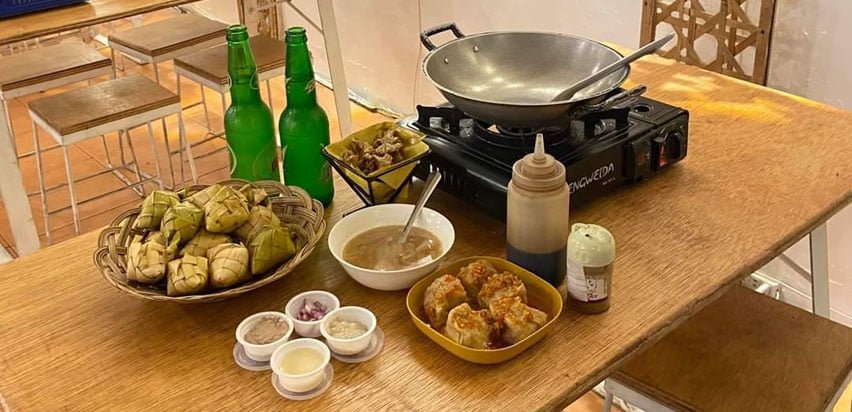
Where to get it: For the more traditional street food experience, you can head to various eateries and pungko-pungko (street food stalls) in barangays Pasil and Suba in Cebu City, especially in the weeks leading up to Sinulog. To try this in more of a restaurant setting, you can visit Azul’s Tuslob Buwa.
7. Guso and Lato
When was the last time you had fresh seaweed salad, if ever? In the Visayas, this usually is made from one of two types of seaweed (or a combination of them): the branch-like guso or Eucheuma; or the succulent lato, also known as green caviar or sea grapes. You can take these as a side dish served raw, in a salad with tomatoes and onions, or kinilaw-style with vinegar and peppers.
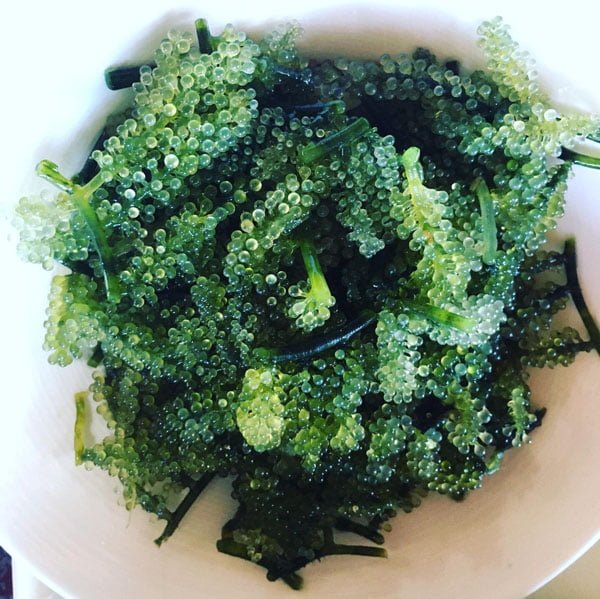
Where to get it: You can get fresh ingredients for this dish at Carbon Market, although the salads are also frequently served at just about any SuTuKil eatery and bakasihan, depending on the harvest of seaweed on any given day.
8. Pork Steamed Rice and Dimsum
“Steamed rice” from a dimsum shop means more than just plain white rice to Cebuanos. You’ll get umami-filled shrimp-and-pork stew on white or brown rice that when mixed serves as a great pairing for your dimsum bites, whether steamed or fried.
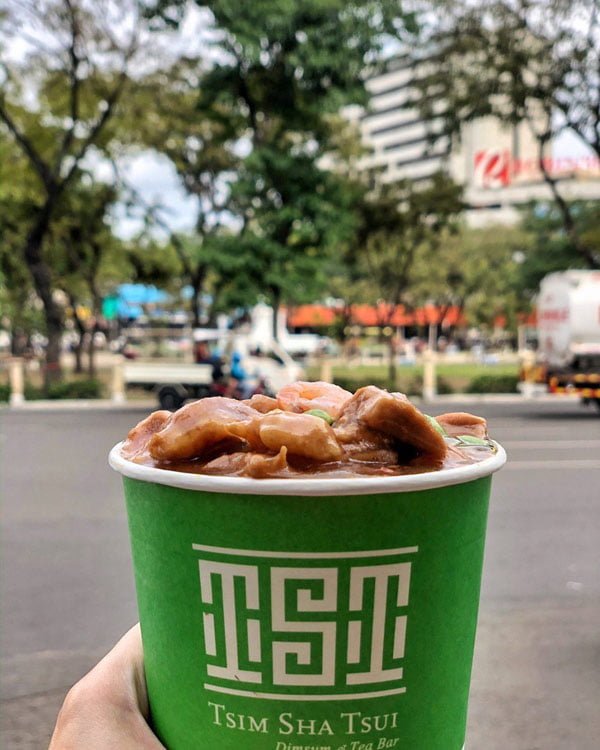
Where to get it: The restaurants most famous for this dish are the Harbour City group of restaurants—Harbour City Dimsum House, Ding Qua Qua Dimsum House, Ding How Dimsum House, and Dimsum Break. All of these restaurants serve this dish and other dimsum dishes at affordable prices (just about all items are in the PHP 100-150 price range for a bowl of this rice or two to three pieces of dimsum). Other restaurants that serve pork steamed rice include Tsim Sha Tsui Dimsum and Tea Bar, Mily’s Siomai and Steamed Rice, and Braddex Batchoy and Steamed Rice.
View this post on Instagram
9. Ginabot
As ginabot refers to pork intestines that are salted, battered, and deep-fried, your arteries won’t thank you for pigging out on these cracklings, but your taste buds will! These can be enjoyed on their own as an appetizer or pulutan (finger food usually paired with alcohol), or with puso as a full meal. Flavorwise, this street food is crispy on the outside, chewy on the inside, and a total umami bomb.
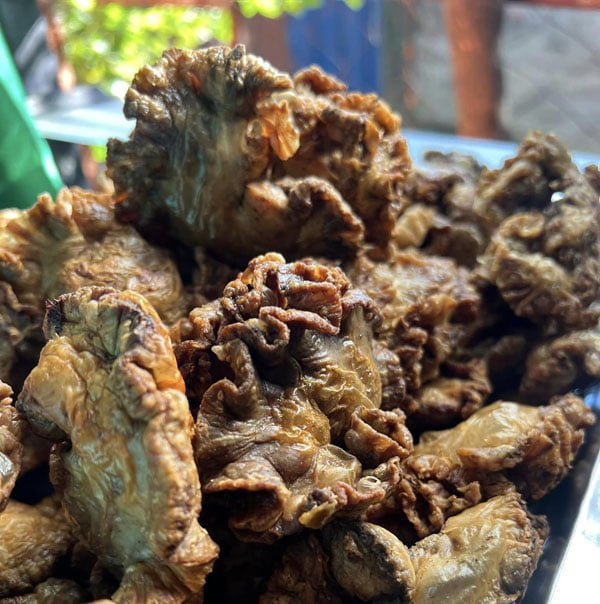
Where to get it: You can traditionally get these from street vendors in Pardo Public Market—cook times are usually around midmorning or afternoon, and you’ll want your ginabot fresh for top yum factor. However, most eateries around the metro will also serve it, including in Pungko-Pungko sa Fuente and Larsian. We also found a fun al fresco restaurant in Lapu-Lapu called Ginabot sa Bayot, owned by a loud and proud LGBTQ community member who pairs his brand of humor with local comfort food.
10. Silvanas
Let’s end this on a sweet note, shall we? Silvanas are the cookie versions of sans rival cakes, served cold and made of buttercream, cashew meringue, and cookie crumbs. Made right, these discs of buttery goodness will just melt in your mouth and leave you in bliss. While modern takes give you ube and chocolate flavors, we’re still partial to the original/plain flavor.
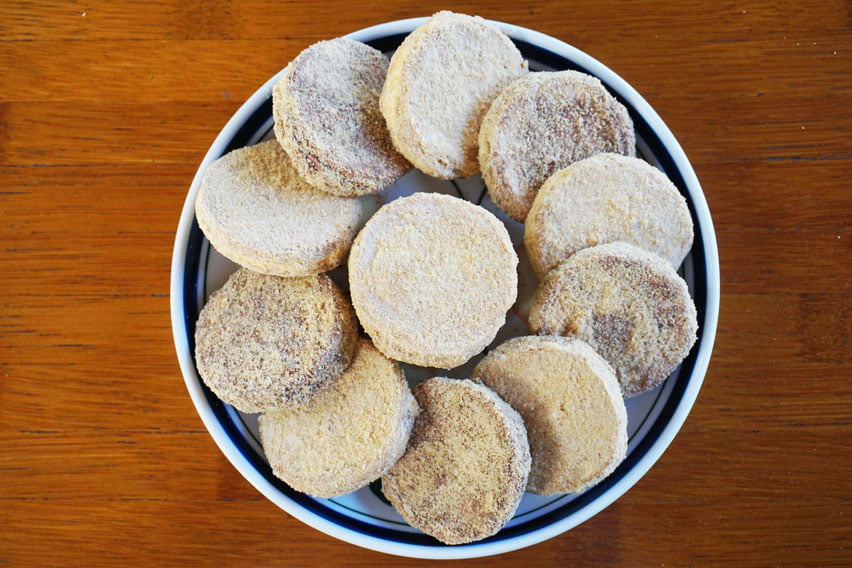
Where to get it: Our top reco for silvanas in Cebu has got to be Nena Montenegro’s creations. Get these from Montenegro’s at 20 Tojong Street, just a street away from Ayala Center Cebu; you can just ring the bell and tell the attendant how many rolls of silvanas you want. For a café or kiosk option, you can also visit Tabléa Chocolate Café or Briquito Silvanas.
We’ve only just barely touched on some of the foodie experiences you can have when visiting the Queen City of the South. Our top tips? Be adventurous, and bring a local with you!
